
- kalari
- Uncategorized
Thank you for giving us the opportunity to speak with you, could you provide an overview of your family’s engagement with Kalarippayattu and the history of Agasthyam Foundation?
Gurukkal S. Mahesh:You know, my journey into Kalaripayattu didn’t start from a decision — it was something I was born into. My father, Sanalji Gurukkal, was my biggest inspiration. He wasn’t just a teacher to me, he was a living example of what it meant to live this path — fully, completely. Our family carries a legacy that goes back more than 150 years, starting from a small village called Vedanthara, before settling in Nemom. This tradition began with my ancestor Ashan Vaidyar and his wife, Chakki. Ashan Vaidyar was a yogi, a devotee of Devi, and a master of varmakalai, the ancient science of healing through vital points. What he created wasn’t just a martial practice — it was a spiritual and healing system, rooted in deep wisdom. That foundation still guides us today.
His son, my great-grandfather Krishnan, took that tradition forward. He was an expert in Thekkankalari and marma chikitsa, and was honoured with Veera Shrinkhalas by the Maharajas of Travancore — a recognition of his martial excellence. I grew up listening to stories from my father and grandmother, about how Krishnan could stop an opponent with a single touch — what we call Choondani Viral Marmavidya. These weren’t just stories to me. They were blueprints of who we were.
Then came Ramakrishnan, also known as Ramakrishna Sivayogi, my grandfather. A yogi in every sense, he taught Kalari, practiced Siddha medicine, and worshipped Lord Subramania. He even built a temple within our kalari grounds. When he left his body at the age of 65, he received a sannyasin’s samadhi right there in the kalari. That level of spiritual discipline left a strong impression on me. And then there was his sister — Rugmini, or Motta Amma as we lovingly called her. She lived like a Buddhist nun, clean-shaven, completely detached from worldly life. But when the time came, she would rise in strength, protect the family, and heal with power and calm. She too was a Siddha healer and Kalari master. Her life was like something out of legend — and yet, she was right there in our home.

My father Sanal Kumar was shaped by these powerful influences. He learnt from both his aunt Rugmini and his mother Sarada, my grandmother. He became a master of Kalari, Siddha medicine, yoga, and tantra. He named our ancestral kalari Dhanwantarikalari, after the god of healing, and made it his life’s mission to preserve and pass on this sacred knowledge. After he passed away in 2002, we continued his vision through the Agasthyam Foundation. My grandmother, Sarada, was the soul of our home. Fluent in Sanskrit, Tamil, and English, she carried immense knowledge and grace. She guided us all with her wisdom until she passed away at 101. Her words still echo in my heart every time I step into the kalari.
Now, I continue this journey as a fifth-generation Gurukkal. Each morning, I wake up to my father’s voice — his chants, his recitations of Agasthya and the 18 Siddhas still linger in my ears. Even though he’s not physically with me, I feel his presence in everything I do. Under his guidance — not just as my father but as my guru — I’ve grown into this path. His teachings weren’t just about how to strike or defend, but how to live — with discipline, compassion, and awareness. He always emphasized that Kalari is not just a martial art. It’s a complete way of life — where the mind, body, and spirit are one. That’s the journey I’m on now. Carrying forward not just a family tradition, but a sacred responsibility. To keep this art alive. To heal. To teach. And to inspire the next generation, just like my father inspired me.

Could you please detail your journey with the Agasthyam Foundation now?
Gurukkal S. Mahesh:Today, the Agasthya Foundation stands as a proud and living center for Kalaripayattu and siddha way of life rooted in tradition, but designed for the future. Under my guidance, I’ve innovated Kalari to support Nalludal complete well-being for all age groups. Whether it is a child, a working professional, or someone in their 60s,Kalari has something powerful to offer. We’ve made it accessible and practical for those facing modern lifestyle disorders from stress, fatigue, and anxiety to deeper health conditions.
Through modules like Nithyam, Shakthi, Akam and Prana, we help people build discipline, strength, and energy. These practices are grounded in the ancient wisdom of Kalari, but designed for today’s busy lives. This is not just martial training it’s a path to healing and transformation. What began in our ancestral kalari has now expanded globally. Through online programs, we are now reaching students across 10 countries, and we’ve established multiple centres both in India and abroad. People from around the world are now connecting with Kalari through our digital platforms practicing from their homes while staying connected to this living lineage. We are also proud to be training elite institutions like the Indian Army, Customs and Narcotics Departments, and even students from IITs.
This is a sign that Kalaripayattu is being recognized not only as a traditional art but as a discipline of strength, clarity, and resilience qualities that institutions value deeply today. Social media has become a vital tool in this journey. I use it to inspire, educate, and influence to show people that Kalari is not just about combat, but about awakening your true potential. We are not just preserving this ancient art we are reviving it, redefining it, and reaching the world with it. Agasthyam Foundation today is a place where tradition meets innovation, where kalari becomes a way of life, and where every individual can discover the warrior within
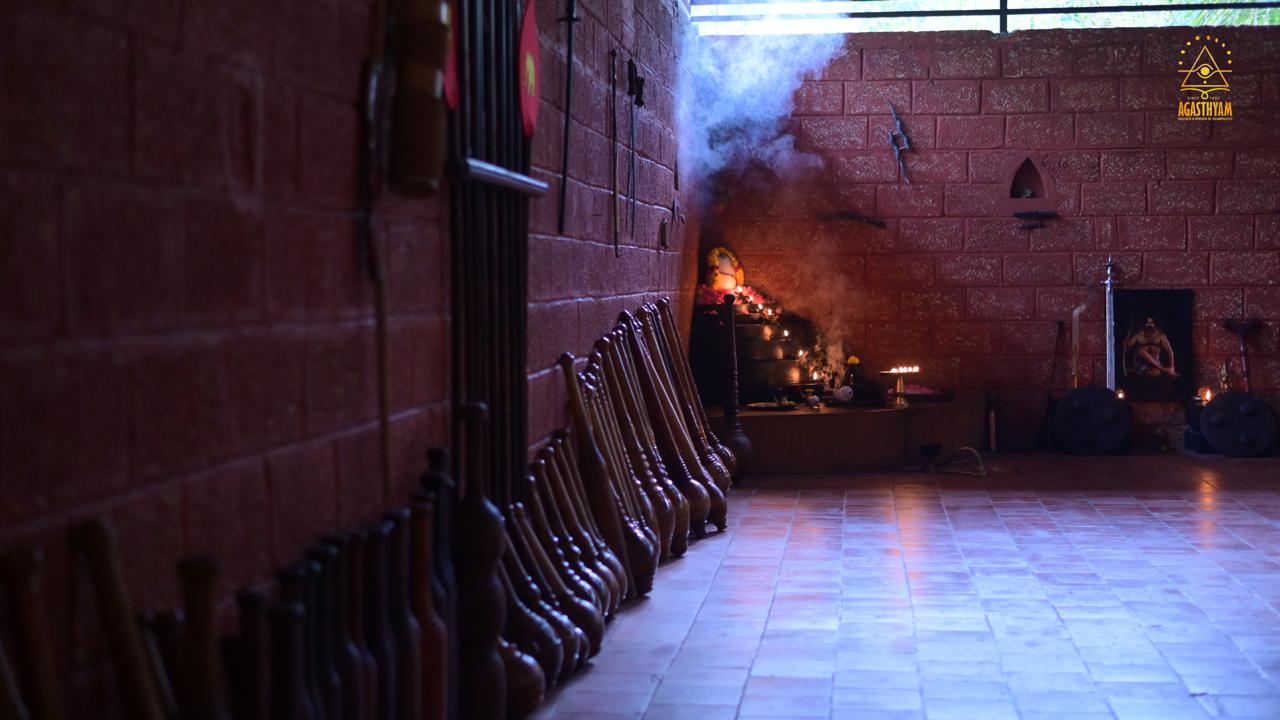
How has the teaching and learning of Kalaripayattu changed in recent years?
Gurukkal S. Mahesh: After the ban imposed by the British in 1804, Kalaripayattu went underground. Even after India’s independence, it took decades for the art to find its place again. During those difficult times, many secret teachings were lost, and entire styles vanished. What we have today is what some dedicated gurus managed to preserve, often through quiet, hidden practice. And today, that knowledge has come back to the limelight.
Personally, I felt that to keep Kalari truly alive, it needed to reshape itself to modern living standards. That doesn’t mean changing the essence the roots remain strong but the way we share it, teach it, and integrate it into life had to evolve. That’s what I’ve worked towards. I am truly happy to see more enthusiasm among youth. Youngsters are coming in with energy, curiosity, and a desire to explore their roots. There’s a fresh wave of respect for our traditions, and I believe Kalaripayattu is reaching new heights.
The awareness is also growing with Khelo India and National games now including Kalaripayattu , it’s getting recognition as both a martial art and a sport. But beyond sport, it’s also evolving as a lifestyle. More people are seeing its benefits for health, discipline, and mental balance. Still, we have a long way to go , I believe 90% of India still doesn’t know what Kalaripayattu truly is. But the tradition is alive, and it’s growing stronger. The path ahead is bright and we carry the responsibility to walk it with awareness and dedication.

Could you talk about the benefits of practicing Kalaripayattu?
Gurukkal S. Mahesh:Kalaripayattu is a complete system for self-transformation. When you practice Kalari, you’re not just training the body you’re awakening the warrior mindset within you. Physically, it builds cardiovascular strength, flexibility, body balance, and muscle resistance. Every movement is designed to open the joints, strengthen the spine, and activate the body’s energy system. It’s a practice that supports longevity, and you can see the signs of youthful energy even in older practitioners.
But beyond the physical, Kalari works deeply on your mind and emotions. It builds mental focus, helps bring emotional balance, and gives clarity in thought and action. That’s why we say Kalari is not just about fighting an external enemy it’s about overcoming your inner blocks, your fears, your limitations.
At its peak, Kalari leads to spiritual elevation. Through breath, discipline, and meditative movement, you become more connected to yourself. It becomes a journey of self- exploration discovering who you truly are. So the benefits are multi-dimensional physical fitness, mental clarity, emotional strength, and spiritual growth. It’s not a sport you do it’s a way of life that brings complete well-being.
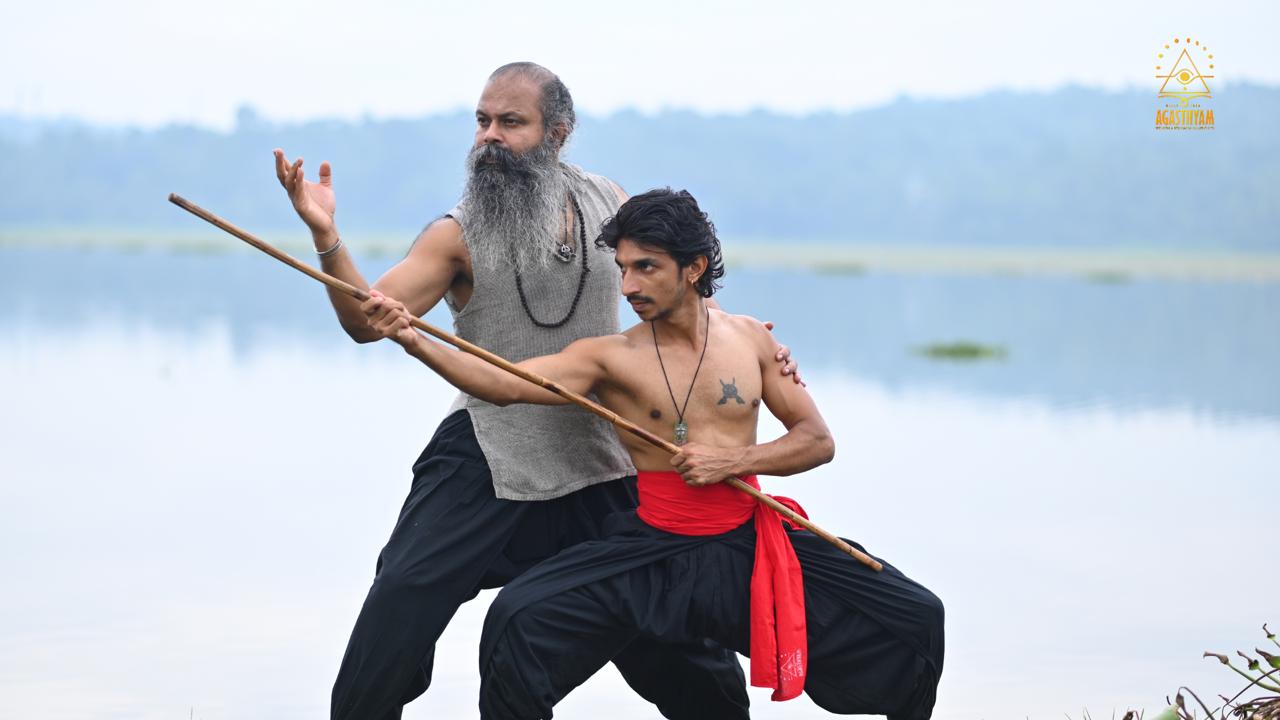
You have been part of many research works on the martial art. Can you walk us through the research you have conducted at Agasthyam?
Gurukkal S. Mahesh: Being an IKS (Indian Knowledge Systems) Centre, we felt it was important to bring scientific validation to what we have known through experience is that Kalaripayattu transforms lives. So we conducted a proper scientific study on the impact of Kalari practice in children. We worked with 400 students across six schools two aided, two government, and two unaided. Out of these, 200 students underwent Kalari training for 16 weeks, while the other 200 formed the control group.
The study was conducted in collaboration with the NISH psychological team, and followed all ethical protocols including pre-tests and post-tests to assess changes. After 16 weeks of structured Kalari training, we saw significant improvements in resilience, fearlessness, and self-esteem among the trained students. It was a real eye-opener not just for us, but for the entire Kalari community.
This study proved that Kalari is not just a martial art it’s a powerful tool for developing inner strength and mental well-being in children. It gave us strong evidence to push for Kalari as part of mainstream education. Resilience is one of the biggest things missing in today’s youth even in our top institutions like the IITs. Many students don’t know how to handle struggles or failures.
They’re smart, they’re capable, but the moment life throws a challenge, they break because the inner strength hasn’t been trained. This is where Kalaripayattu comes in. It’s not just about physical training it’s about getting up when you fall, again and again. That’s resilience.
Confidence doesn’t come from motivational quotes it comes from action. When you train, sweat, fail, and try again that’s when you begin to feel confidence building in your body. And that confidence leads to fearlessness. So through Kalari, we are not just creating fighters we are shaping individuals who can stand strong in life, with courage and clarity.
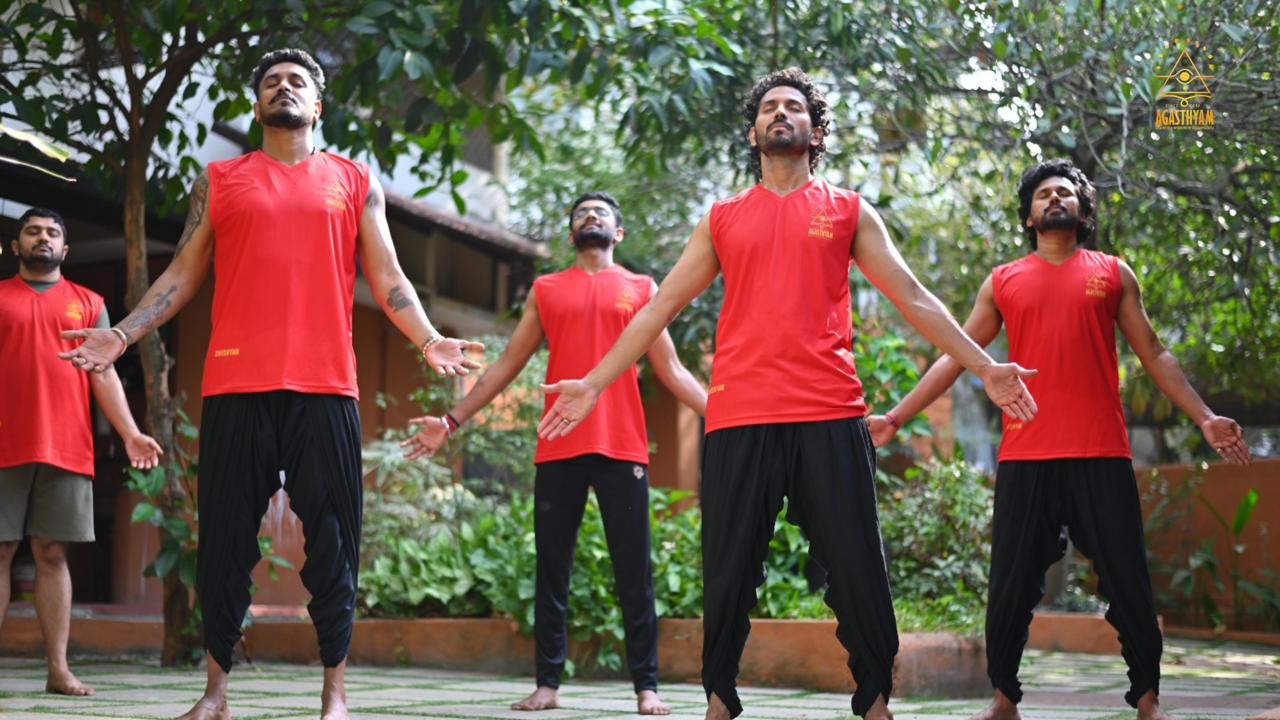
Kalarippayattu has historically been a male-dominated arena. What was your motivation to bridge this gap by introducing the Shakti program?
Gurukkal S. Mahesh: Kalaripayattu was never meant to be male-dominated. If you look at our martial history, alongside the heroes, we’ve always had heroines none more iconic than Unniyarcha, born into the great Puthuram family, renowned for producing exceptional warriors. Her brother, Aromal Chekavar, was a fierce warrior whose name alone inspired fear, and their father, Kannappa Chekavar, was a respected Kalari masters.
Unniyarcha herself was a highly trained and fearless warrior, and her legacy reminds us that Kalari belongs to everyone both men and women. Even early European travelers documented that Kalaripayattu was practiced by both genders. In our own Kalari today, more than 60% of our students are girls. This inspired us to launch SHAKTHI Fearless Feminine in 2019. It’s more than just a self-defense program it’s a movement to awaken the warrior within every girl.
So far, we’ve trained over 12,000 girls across schools, colleges, and communities. Through this, we’ve seen real transformations in confidence, resilience, voice, and self-esteem.At Agasthyam Kalaripayattu, my vision is to build a fearless society, where women are not protected but empowered. SHAKTHI is our way of saying: strength, courage, and leadership are not defined by gender they are qualities every human can embody.
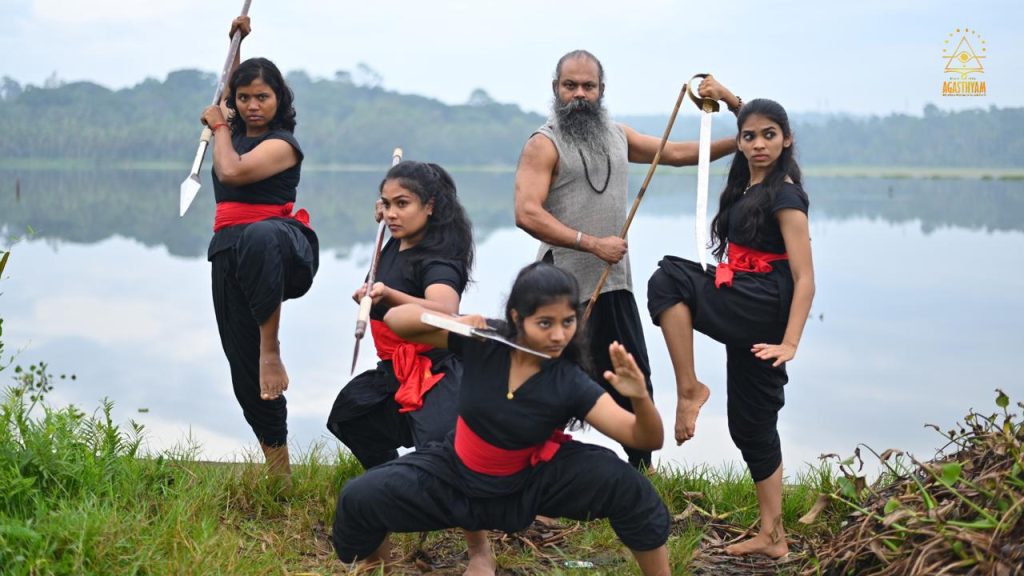
Do you think that Kalarippayattu is relevant in contemporary times? How does the practice of martial arts benefit the current generation?
Gurukkal S. Mahesh: Yes, absolutely. In fact, I believe Kalaripayattu is more relevant today than ever before. We live in a time where our bodies are becoming inactive, our minds overstimulated, and resilience is low, even among students in places like IITs.
Many don’t know how to bounce back from failures. Kalari offers something very unique — it is not just a martial art, it is a way of life. It builds what I call the warrior mindset — the courage to face struggles, the strength to rise again, and the clarity to move forward with purpose.
Physically, it’s a complete system: cardio, flexibility, resistance, balance, and long-term vitality. Mentally, it brings focus, emotional stability, and confidence. Spiritually, it elevates awareness and connects us to prāṇa, the life force.
For the current generation, dealing with anxiety, distractions, and lifestyle diseases, Kalari becomes a path for self-exploration and holistic well-being. That’s why at Agasthyam, I’ve reshaped Kalari to fit modern living. Through programs like Nithyam, Shakthi, and Prāṇa, we’re making it accessible for all ages not just as a sport, but as a lifestyle practice.
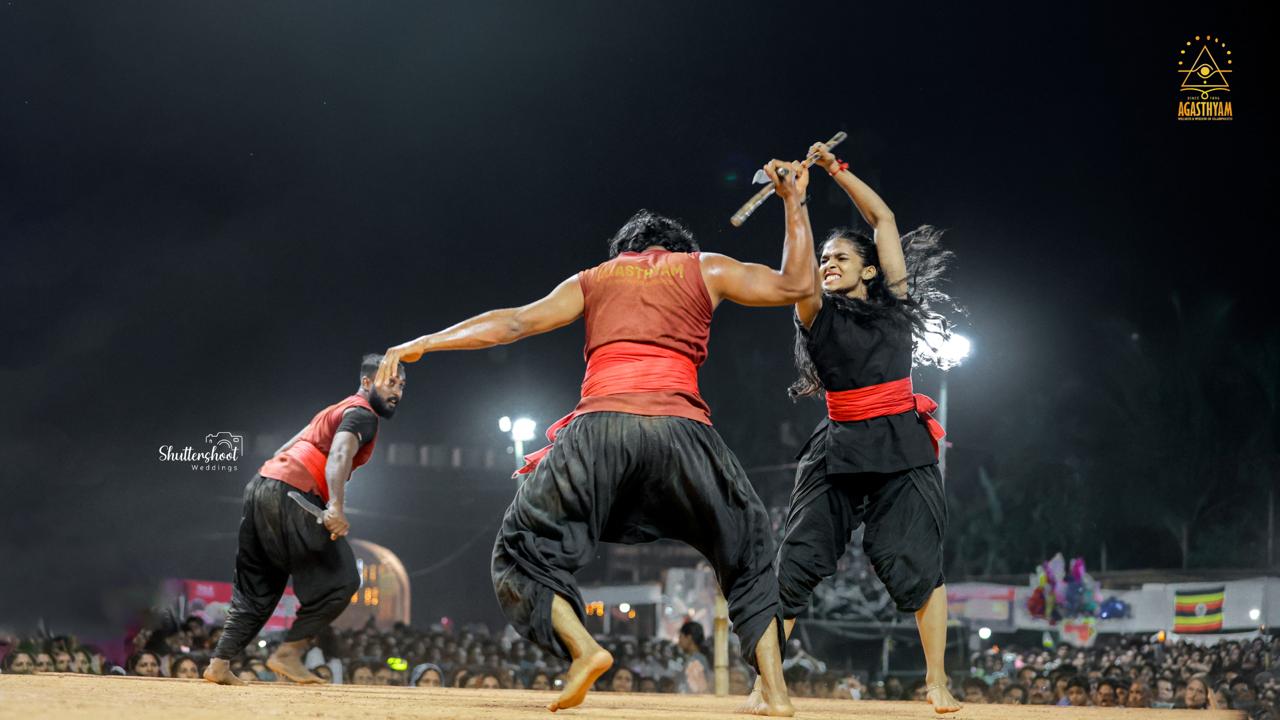
You have spoken in many arenas about the mental health benefits of this practice. In your experience, what are the changes you have noticed among your students?
Gurukkal S. Mahesh: Definitely. I see major transformations in my students mentally, emotionally, and spiritually. One of the biggest changes is how they become more confident and fearless. And the most important thing, which I feel is missing in today’s world, is resilience the ability to come back after a fall.
Let me share a story. There is a girl named Raga, a multiple-time national-level Kalaripayattu winner. Once, during a sword performance in Delhi, her ear got cut badly in the middle of the act. Blood was flowing but she stayed absolutely calm. She finished the performance with full grace and power. After two hours, we went to the hospital she got six stitches.
Next day, newspapers were talking about her “How can a 16-year-old girl show such courage while many scream at the sight of a cockroach?” This is not a one-time case. This is what Kalari builds in you that inner silence, strength, and mental stability. We’ve seen remarkable changes across students in our Kalari. Their stress levels reduce, their focus increases, and they carry themselves with a different posture and presence. Even school posters started calling them “calm warriors” because of how they’ve changed.
And yes, ‘Agasthyams Nalludal’ better health, sleep, energy, emotional balance all these come naturally with regular Kalari practice. Kalari is not just about fighting outside. It’s about winning the battle inside.
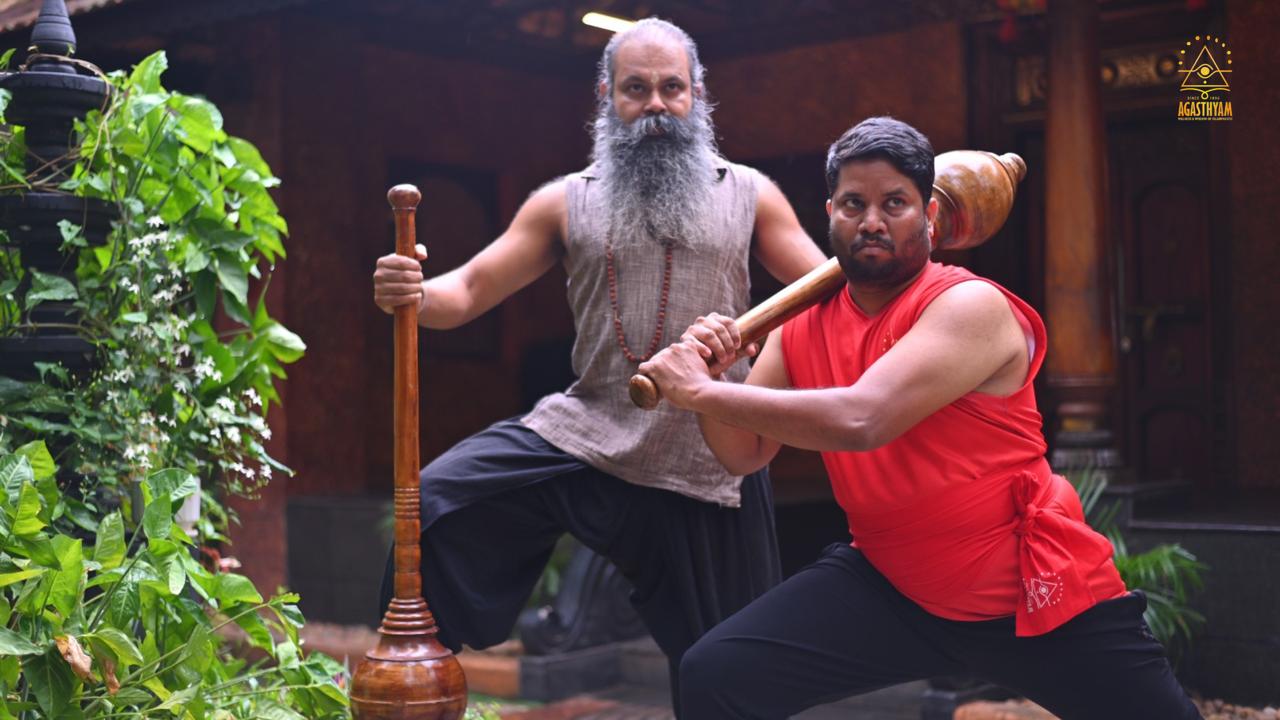
How do you envision the future of Kalarippayattu?
Gurukkal S. Mahesh: I believe the future of Kalarippayattu is not just bright—it’s limitless. We are only beginning to understand the depth and potential of this ancient system. In my vision, Kalari can be the foundational base for all sports in India—physically, mentally, and spiritually. It builds agility, resilience, focus, coordination, and balance—the very qualities every athlete needs, regardless of the sport.
There’s also huge research potential in Kalari. We need more scientific studies on how it impacts the body, brain, and behaviour. We’ve already seen how it helps with stress management, emotional strength, confidence, and physical well-being in students. Imagine what deeper academic exploration could unlock—for sports medicine, psychology, education, and preventive health.
In fact, Kalari has all the ingredients to be integrated into the academic curriculum—not just as a physical activity, but as a model for whole-child development. It should be introduced as a structured part of school and university life, with levels, certifications, and credits—just like any mainstream subject. With proper support, Kalari can become India’s global contribution to holistic health. It’s not just a martial art. It’s a complete lifestyle system—physical fitness, mental focus, spiritual awakening, and emotional intelligence—everything modern life desperately needs.
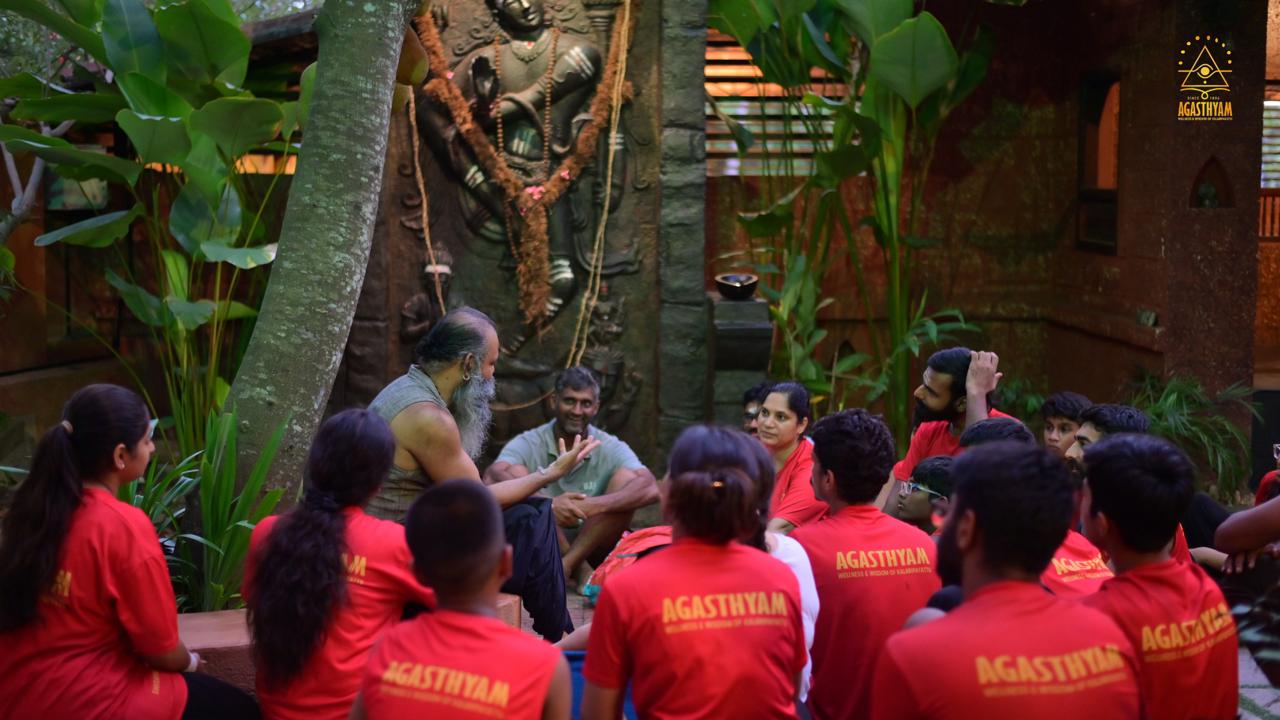
What influence have technological advancements had in the teaching and learning experiences of Kalarippayattu?
Gurukkal S. Mahesh: Technology has helped us break the boundaries of geography and time. Earlier, Kalari was something you had to learn only by physically being in a traditional kalari space. But today, with online platforms, we are able to teach and reach students across the globe. People from more than 10 countries are part of our online programs. We’ve also established multiple training centers, and we are proud to have trained personnel from the Indian Army, Customs, Narcotics, and even premier institutions like IITs.
We use social media as a tool not just for promotion, but for education and inspiration. Short reels, interviews, posters, live sessions they all help in spreading awareness. Many people who had never even heard of Kalarippayattu are now following, learning, and even teaching it.
So, yes, technology is a big blessing when used with the right intention. It helps us preserve and promote the essence of Kalari while making it accessible to all ages, backgrounds, and regions. Even during lockdown, our students stayed connected, practiced daily, and grew stronger not just physically, but emotionally and spiritually.
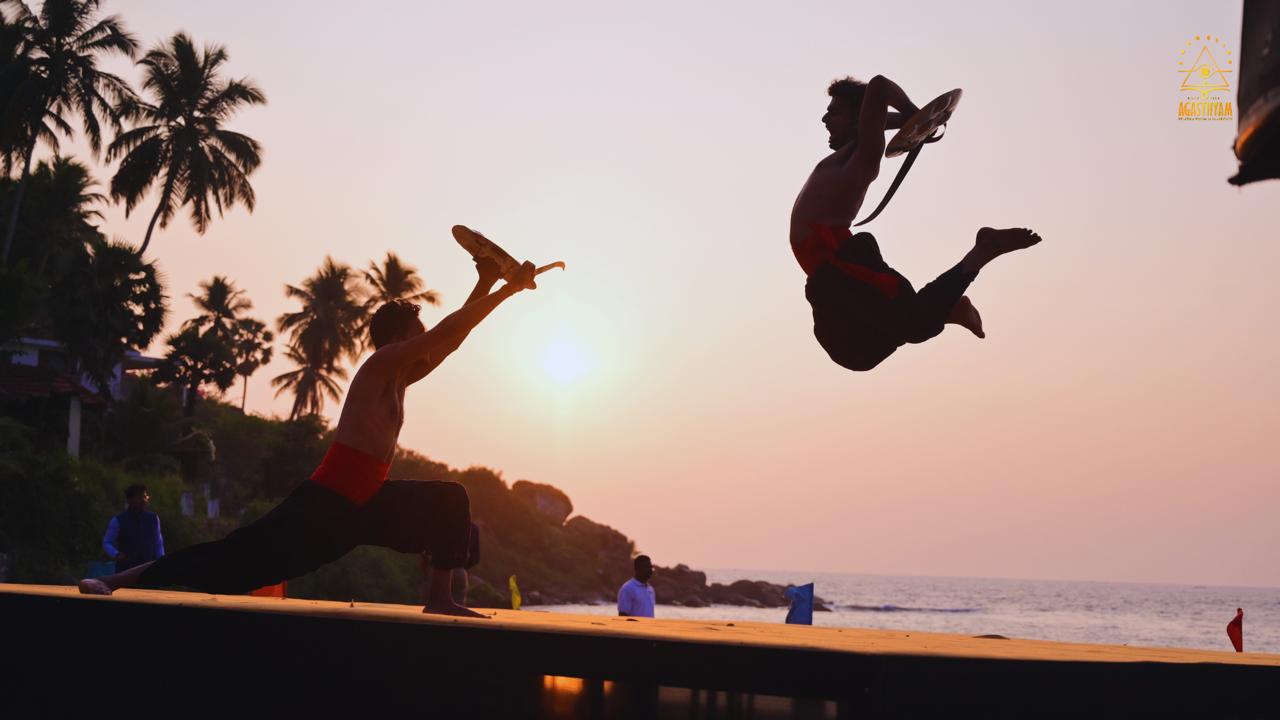
Could you detail some of the challenges that Kalarippayattu faces in contemporary times?
Gurukkal Mahesh: Yes, while I feel blessed that many great gurus and practitioners are actively working today to revive and spread Kalarippayattu, there are still significant challenges we needto address. One of the main issues is the lack of properly trained instructors. Many people start learning Kalari, but very few go deep enough to become true trainers who carry forward the essence, discipline, and values of the art. Without strong pedagogical systems, the transmission can become shallow.
Another challenge is the lack of research and documentation. For such a profound and ancient system, scientific studies are minimal, and many aspects like its effect on mental health, physical development, emotional resilience are not fully explored. There is a huge potential for Kalaripayattu to be integrated into academic curriculums, sports science, health, and wellness systems, but we need collaborations with universities and scholars to make that happen.
Also, in some cases, the tradition is being clouded by blind beliefs or diluted philosophies, rather than being practiced with clarity, purpose, and grounding. Kalaripayattu is not just about fighting or performance it’s about self-awareness, healing, inner power, and community connection. People must understand that philosophy and practicality go hand in hand in Kalari. We have a great living tradition, but for the future, we need deep roots and wide wings connection to tradition with openness to evolve. Only then can Kalarippayattu thrive in today’s world.
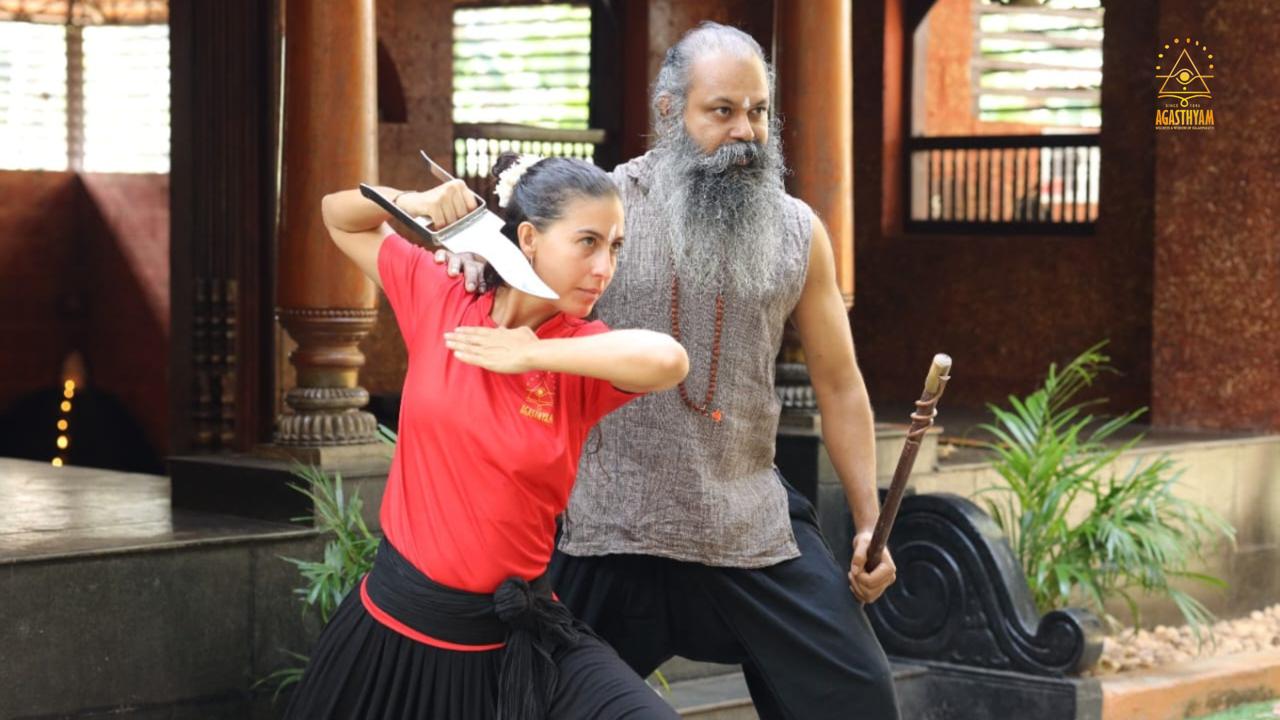
Kalarippayattu is often coupled with Kalari Marmachikitsa.Does Kalari Marmachikitsa have the potential to become a complementary treatment practice?
Gurukkal Mahesh: Definitely, Kalari Marmachikitsa is one of the most powerful and sophisticated traditional healing systems of India, passed down through generations alongside the martial training of Kalarippayattu. It is rooted in the ancient understanding of marmas vital points which are not just anatomical, but also energetic and psychological centers in the body.
When practiced with the right training, dedication, and ethical clarity, Marmachikitsa can become a strong complementary therapy, especially in cases where modern medicine hits its limits chronic pain, musculoskeletal issues, postural misalignments, stress- related disorders, and even trauma recovery.
At Agasthyam Kalari, we’ve seen remarkable results combining Kalari practice with Marmachikitsa students heal faster, become more aware of their body, and experience a greater sense of well-being. What makes it unique is that it doesn’t just treat the symptom but looks at the entire person body, mind, breath, and energy.
There is an urgent need to document, research, and bring scientific validation to this system. I believe if it’s properly codified and taught, Kalari Marmachikitsa can become a respected wellness science that complements physiotherapy, Ayurveda, and even modern rehabilitation practices. It’s time to recognize that India has had its own powerful body-mind healing systems for thousands of years.
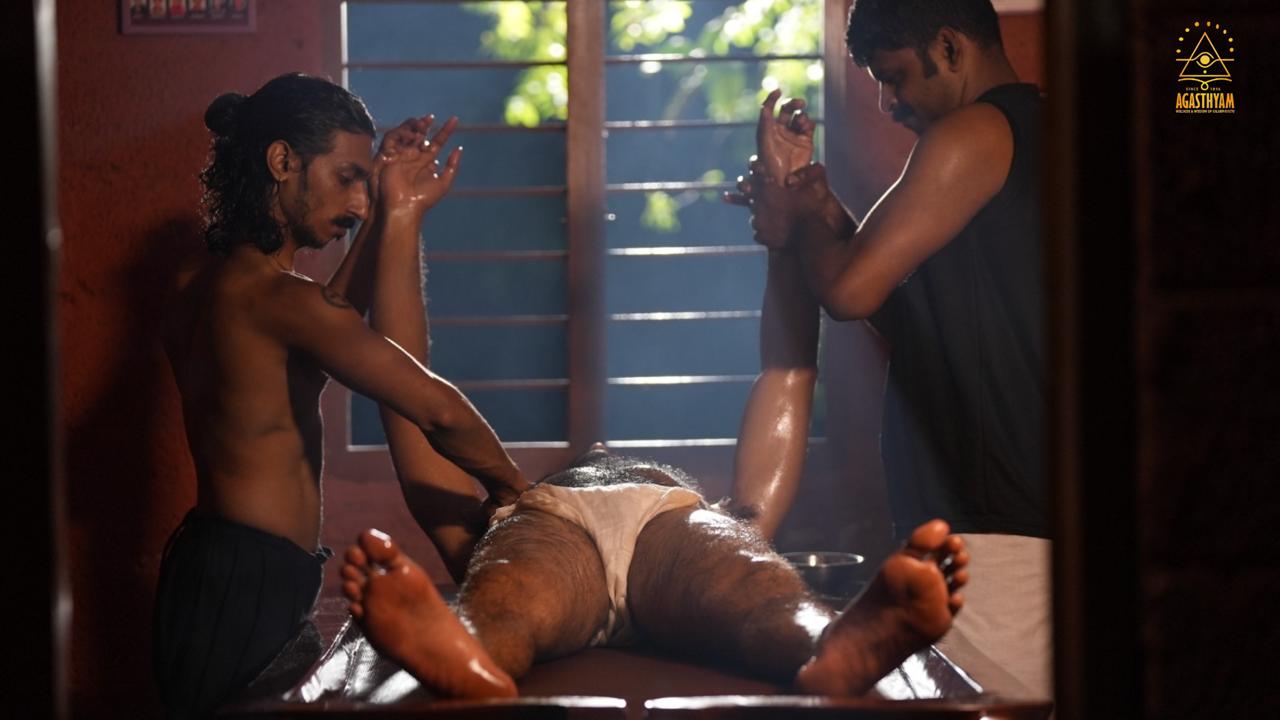
What are the career opportunities in the domain of Kalarippayattu?
Gurukkal Mahesh:Kalarippayattu today is an emerging career path rooted in health, education, fitness, and cultural revival. At Agasthyam Kalari, we understood early that for Kalari to thrive, we must create structured opportunities for dedicated students to become professional trainers, educators, and wellness practitioners.
That’s why five years ago, we started a Sampradayam Trainers Training Program, built after two years of research. This isn’t just a course it’s a journey through the tradition, beginning with Foundational, then Intermediate, and finally Advanced levels. The program spans one year, but the learning goes deep physically, mentally, and spiritually.
Many who completed our TTC (Trainers Training Course) have gone on to build full-time careers as Kalari trainers. Some now teach in schools, wellness centres, universities, or run their own kalaris. Others have combined it with yoga, physiotherapy, fitness, or dance to create unique, holistic offerings.
This program is where traditional wisdom meets modern pedagogy. We focus not just on techniques, but on teaching methods, anatomy, injury prevention, philosophy, and leadership. If someone is truly passionate about Kalarippayattu, they can transform it into a fulfilling and sustainable life path with Agasthyam.

There is some gender disparity among Kalarippayattu instructors. In the future, do you see more female instructors taking up this martial art?
Gurukkal Mahesh:Absolutely. In fact, at Agasthyam, we’ve already started breaking that barrier. Today, we proudly have an equal number of male and female trainers, which itself is a strong message. Many aspiring women are coming forward not just to learn, but to teach, lead, and represent Kalari at the highest levels.
We’ve seen a powerful shift especially in the last few years. Earlier, Kalaripayattu was seen as a male-dominated domain, but history reminds us that it was never meant to be that way. Women warriors like Unniyarcha stood shoulder to shoulder with men. And now, that spirit is returning. In state and national championships, the number of female participants is growing rapidly, and they’re performing with immense skill and strength.
Our SHAKTHI program, which we started in 2019, has played a key role in this transformation training over 12,000 girls so far. Many of them are now role models in their communities, and some are beginning their journey to become instructors themselves. I truly believe the future of Kalaripayattu will be led equally by men and women. The art doesn’t belong to a gender it belongs to the spirit. And when that spirit is awakened, anyone can rise.
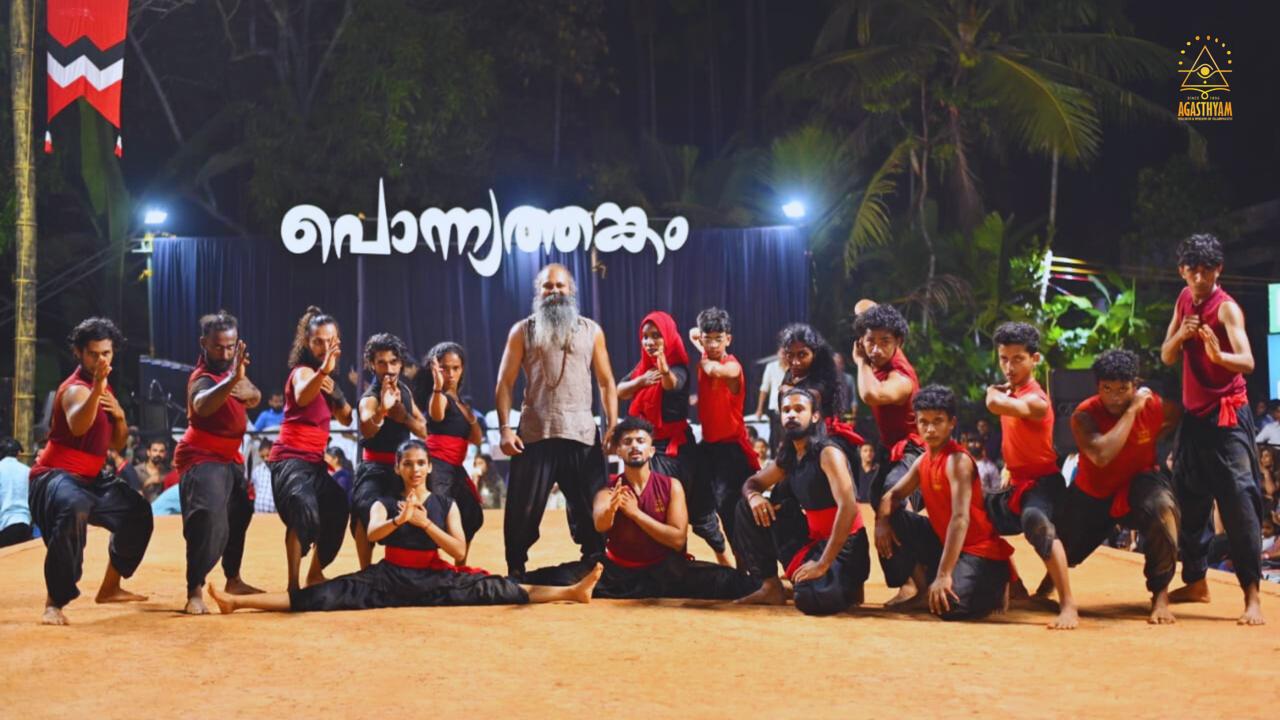
What type of support would you like to receive to promote Kalarippayattu? Could you please elaborate on the existing institutional support available to Kalarippayattu?
Gurukkal Mahesh: Kalarippayattu has the power to transform lives physically, mentally, and spiritually. To unlock its full potential for society, we need stronger institutional support. Right now, we are grateful for the support from the IKS Division under the Ministry of Education, which has recognized Kalarippayattu as an important part of our Indigenous Knowledge Systems. Also, SAI (Sports Authority of India) has taken steps to support Kalari as a sport through initiatives like Khelo India. These are encouraging beginnings.
However, to truly promote and preserve Kalarippayattu at a national and international level, we need more: Academic collaboration with universities to include Kalari in their curriculum.
Scientific research backing especially in areas like mental health, lifestyle enhancement, and longevity, where Kalari has already shown incredible results. Certification frameworks and MoUs that recognize trained Gurus and institutes formally, so the art can spread with structure and quality.
Government and private partnerships to take programs like SHAKTHI – Fearless
Feminine further into rural and urban schools, empowering girls at scale. Kalarippayattu is not just a martial art it’s a complete way of life. It builds strength, resilience, and values. With the right support, we can train thousands more, document our lineage and traditions, and show the world how Kalari is not just relevant but essential for the modern age.




